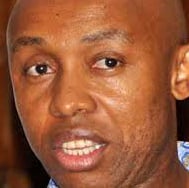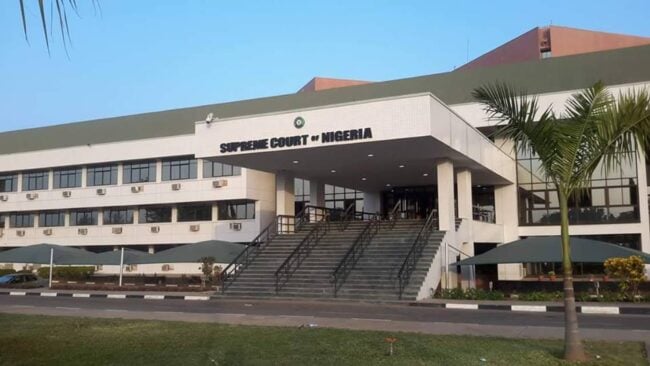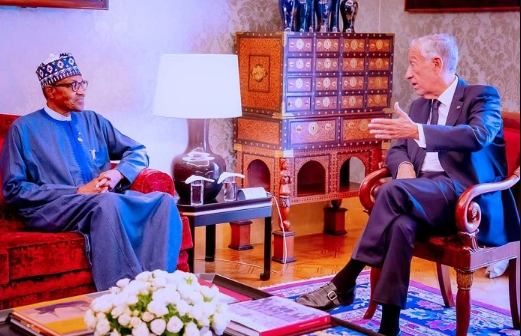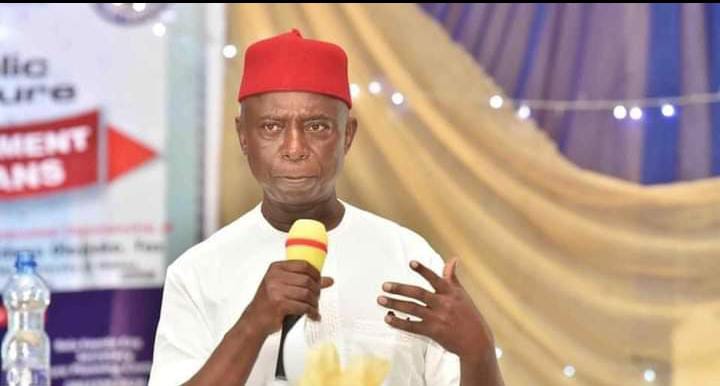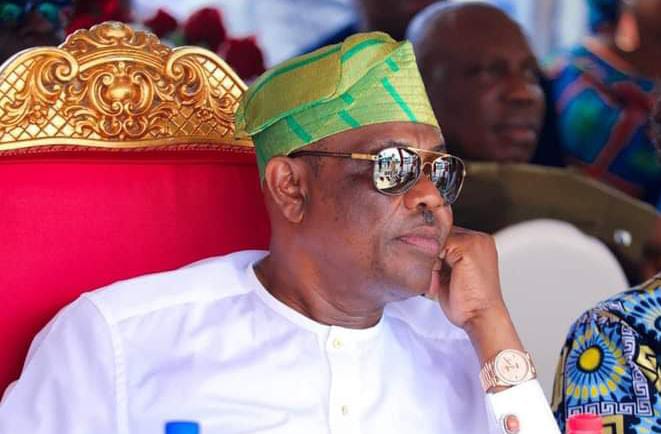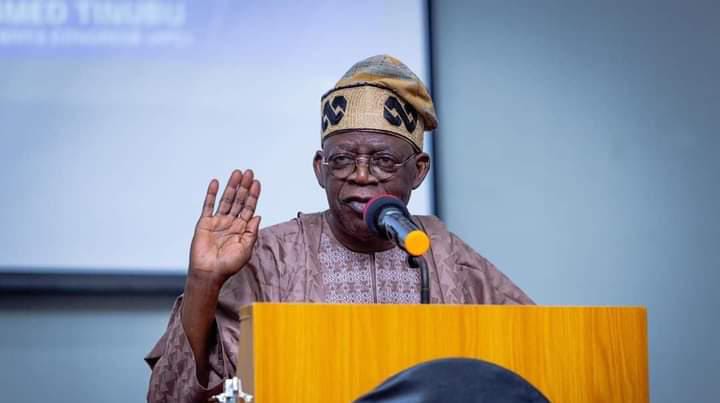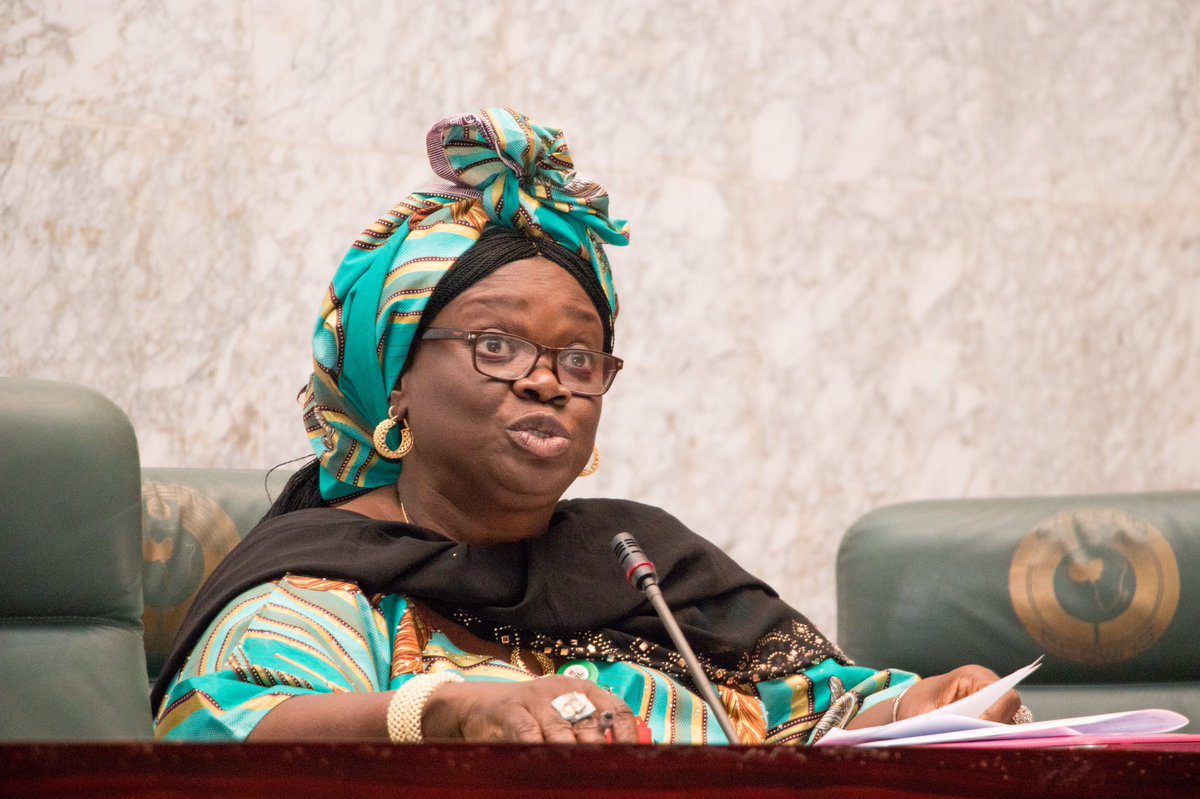Supreme court
“The want of bread is terrible,” Arthur Young, (1789).
On Monday, June 27, 2022, General Muhammadu Buhari swore in Olukayode Ariwoola as the fourth chief justice of his seven-year-old tenure as president with electoral legitimacy. Ariwoola’s predecessor, Tanko Muhammad, departed from office earlier on the same day, the second successive Chief Justice of Nigeria (CJN), to be forcibly “resigned” from office.
The official reason given for the unceremonious resignation of CJN Tanko Muhammad was ill-health. This was true only as a metaphor for the state of the judiciary that he claimed to lead. In any other sense, ill-health was only a convenient cover for the un-mourned departure from office of a man who was uniquely unsuited for high judicial office and who would have struggled to make the office of a magistrate in a different season even in Nigeria. His presence in the office of the chief justice emblematized every affliction that has come to define the third branch of government in Nigeria.
Last Monday was not the first time claims of serious ill-health had swirled around CJN Tanko Muhammad. In December 2020, he missed the ceremonial opening of the judicial year and was unavailable to perform the swearing-in of the new senior advocates of Nigeria (SANs), traditionally the flagship in the annual diary of the chief justice.
One newspaper reported on December 15, 2020, that “the CJN had inaugurated eight justices of the Supreme Court on November 6 but since then, there are conflicting details on when he was last seen in public”, a duration of 40 days. On the same day, another medium reported that Chief Justice Tanko had “been flown to Dubai for emergency treatment after suddenly contracting coronavirus in what appears to indicate that he may be suffering from other ailments”. The following day, a different publication said that the chief justice was “enduring a torrid battle with dementia and heart disease complications”, claiming that his “illness, ….has been kept under wraps since he assumed office as Nigeria’s top jurist in 2019”.
Advertisement
The reports and rumours about the ill-health of Chief Justice Tanko appeared to suggest that they were linked to advanced age. Under Nigeria’s constitution, a chief justice must vacate office at 70. The problem with Chief Justice Tanko was that a good deal about his background was shrouded in opacity or worse. In May 2019, the federal high court in Abuja terminated a case instituted against acting chief justice, Tanko Muhammad, which accused him of having falsified his date of birth to December 31, 1953. Avoiding the issue, the court held that the claimant lacked the standing to initiate the case and levied him with punitive costs of N10 million.
Chief Justice Tanko paraded impressive academic certificates, including a first degree, masters, and doctorate degrees in Islamic Law from the Ahmadu Bello University, Zaria, but could not quite account for his primary school education, claiming in an affidavit sworn to while he was a justice of the court of appeal in Jos in 1998 that “vicious termites destroyed his primary school certificate”.
In one of those miracles for which Nigeria is very famous, Tanko Muhammad was appointed a judge in spite of these and went on to thrive in judicial office, becoming the fourth out of the past seven Chief Justices of Nigeria to depart office in a blaze of scandal.
Advertisement
On August 29, 2011, Chief Justice Aloysius Katsina-Alu retired from office, a mere 11 days after the National Judicial Council (NJC), which he chaired purported to suspend then president of the court of appeal, Ayo Salami. Salami had accused Katsina-Alu of instructing the corruption of the judicial process by the court of appeal in an election petition involving the contest in the 2007 election for the office of the governor of Sokoto state.
For this sin, the Federal Judicial Service Commission (FJSC), chaired like the NJC by the CJN, sought to pack off the president of the court of appeal to the supreme court, presenting it as a promotion. When he resisted, the NJC entered the fray turning the matter into a disciplinary encounter. To investigate the allegations, the NJC constituted a fact-finding committee chaired by Umaru Abdullahi, a former president of the court of appeal. The report of the Umaru Abdullahi fact-finding committee ran into 23,952 words. It has never been officially published.
Before the Umaru Abdullahi committee, a set of judicial elders led by former supreme court justice, Bolarinwa Babalakin, had waded into the matter, portraying it as an inter-personal kerfuffle, allegations that went to the foundations of the judicial enterprise. After Umaru Abdullahi’s committee, the NJC empanelled another chaired by then chief judge of the federal high court, Ibrahim Auta, to determine punishment. The end appeared pre-determined.
Dahiru Musdapher, who was in line to succeed Katsina-Alu as CJN, testified on behalf of Katsina-Alu before the Umaru Abdullahi committee but declined to do so on oath, infamously claiming that in lieu of an oath he had done his ablutions. When this was all done, the reputations of the outgoing chief justice, his assured successor and the president of the court of appeal were in ruins. None recovered. An even worse fate befell the public standing of the judiciary. The tragic appearance crystallized that Nigerian judges could be bought and sold at the highest levels in a political marché ouverte.
Advertisement
The tenures of Aloma Mukhtar and Mahmud Mohammed as CJNs were mercifully devoid of scandal, which quickly returned when the tenure of Chief Justice Walter Onnoghen suffered the Guillotine at the hands of an ex parte order procured at night from the Code of Conduct Tribunal in January 2019.
When he took office in succession to Walter Onnoghen in 2019, not much was expected of Tanko Muhammad as chief justice. At the termination of his office last Monday, it was said that “the move to get Muhammad out of his seat was planned long ago and was spearheaded by a senior cabinet official and head of a security establishment”. The same report also explained that “the ex-CJN was forced to resign on two grounds – the letter collectively written against him by 14 supreme court justices, and ‘certain issues of financial impropriety”.
Among the allegations, a medium reported that a “son (of the ex-chief justice) was said to have accepted a $10 million bribe from (a) former governor…. after promising to procure judgement for him on an election matter that didn’t later materialize”.
The fact that these allegations were so repeatedly made and credibly too during the tenure of Chief Justice Tanko is more important than whether in fact they are verified to a criminal standard of proof. With the CJN as the head of the NJC, little could be done to prove these allegations while the accused was in office. The now infamous letter by the justices of the supreme court mercifully administered the coup de grace on a judicial tenure that always appeared programmed to end in calamity.
Advertisement
Chief Justice Tanko possessed unique limitations that were well suited to magnifying the rot in Nigeria’s judiciary. It is easy to make him a scapegoat but that would be both lazy and convenient. The most significant thing about the letter by the justices was that it had nothing to do with disagreements of principle or about the public standing of the judiciary. Rather, it focused most on subsistence issues such as lack of accommodation through diesel rationing to WiFi hunger. It all affirmed Martin Luther King’s famous line that “a riot is the language of the unheard”.
Tanko’s signal contribution to the degeneration of high judicial office in Nigeria is that he impoverished the supreme court to the point of making its justice advocates for stomach infrastructure. The letter itself is evidence of how far Nigeria’s judicial branch has travelled from what should be its primary purpose. The responsibility at the supreme court for this must be collective.
Advertisement
At the heart of this crisis is the fact that over the past quarter-century, the CJN has become more than merely a first among equals. In addition to being CJN, s/he also heads the NJC, the FJSC, the Legal Practitioners Privileges Committee, and the board of the National Judicial Institute (NJI), all of these statutory or constitutional bodies. These accretions have brought with them powers, budgets and prerogatives that transformed the occupant of the office of CJN from a judicial figure into a biological portal for contracts, preferments and patronage. Rather than being treated as a peer, the CJN is a principality that must be worshipped and glorified by colleagues for basic entitlements.
Perhaps the most astonishing passage in the letter by the justices is the fact that they did not meet throughout the COVID crisis. This reveals a failure of pastoral and human care that verged on criminal. The letter easily enables us to understand how two justices of the supreme court tragically died in the three years that Muhammad Tanko was chief justice.
Advertisement
For the acting chief justice, Ariwoola, the things that need to change are obvious. The fate of his predecessor must be both an object lesson and inspiration.
A lawyer and a teacher, Odinkalu can be reached at [email protected]
Advertisement
Views expressed by contributors are strictly personal and not of TheCable.
